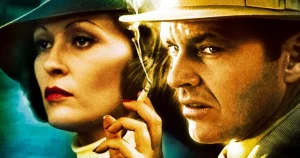Sherman Oaks: Let’s Go Back in Time!
June 7, 2022
The San Fernando Valley
July 5, 2022Van Nuys Has Taken On Mythical Proportions

Photo provided by Van Nuys Neighborhood Council
There’s an old joke. An old Jewish couple tell their children they’re moving back to the old country:
Oh! Is it nice?
Nice? NICE? As a matter of fact, it’s …
Van Nuys!
Since the beginning of time (Hollywood time), the City of Van Nuys has taken on mythical proportions. You must remember this. It was at the Van Nuys Airport where Rick Blaine held Elsa in his arms, while the plane propeller was winding up, compelling a conflicted Ingrid Bergman to leave Casablanca. It’s also where Stan and Ollie filmed The Flying Deuces three years earlier. Sixty years later, Paul Thomas Anderson decided to film his legendary “raining frogs” scene from his masterpiece Magnolia on Reseda Boulevard in Van Nuys.
The town was founded in 1911 and named for Isaac Newton Van Nuys, a rancher, entrepreneur and one of its developers. Not the apple dropped on his head guy; yet a man with gravity nonetheless. Van Nuys was annexed by Los Angeles on May 22, 1915, after completion of the Los Angeles Aqueduct, providing it with the water required for further growth. Roman Polanski’s Chinatown built its complex plot of city corruption around this idea.
Cross: That’s what I am doing. If the bond issue passes Tuesday, there’ll be eight million dollars to build an aqueduct and reservoir. I’m doing it.
Gittes: Gonna be a lot of irate citizens when they find out that they’re paying for water that they’re not gonna get.
Cross: Oh, that’s all taken care of. You see, Mr. Gits. Either you bring the water to LA or you bring LA to the water.
Gittes: How you gonna do that?
Cross: By incorporating the valley into the city. Simple as that.
Van Nuys was the first new stop
on the San Fernando Line of the Pacific Electric Railway red cars system, which boosted its early land sales and commercial success. From as far as Alhambra, in 1917, day trips were organized for potential buyers of five-acre farms.
The idyllic Bing Crosby song “I’ll Make the San Fernando Valley My Home” was Number 4 on the “Hit Parade” as the soldiers went ashore on D-Day. After World War II, the sleepy farming town changed, as veterans “discovered” the San Fernando Valley. After the war effort shifted to civilian commerce in the late 40’s and early 50’s, airplane manufacturing boomed as commercial aviation became the new mode of travel. In l946 General Motors built its Chevrolet assembly plant in Van Nuys. Farmland and orchards were replaced by endless tract homes that signaled a shift in Van Nuys’ commercial and agricultural base.
Remember the movie “American Graffiti”? The director, George Lucas, may claim it was Modesto—but anyone of a certain age “knows” it was Van Nuys Blvd, in the 1960’s, 1970’s and 1980’s where a youth culture was defined by “Wednesday night cruising” to show off one’s “wheels”.
It’s still a vital town—that generates its own famous people—actors Natalie Wood and Robert Redford, Marilyn Monroe and Jane Russell, athletes like NFL legend Bob Waterfield and the Dodgers’ Don Drysdale, Johnny Parsons of “Indianapolis 500” fame, and many others.
And so while Van Nuys may be a very busy side of your daily shopping, dentist, or work, there’s much more history birthed there than you can believe.
To paraphrase nightclub owner and ex-pat Rick Blaine once said to freedom fighter Elsa:
“We’ll always have Victory. Victory Boulevard, that is….“
He winks; they kiss.
Happy Ending
Sources: Wikipedia, Van Nuys Neighborhood Council




